visible light (christmas eve 2006)
We gather on Christmas eve, 2006 to bear witness once again to a simple truth: the light shines in the darkness, and the darkness has not overcome it. When God’s people have tried to get their minds wrapped around what the glory and greatness of God is like, they have been drawn again and again to the image of light.
In the creation, God separated light from darkness, creating the greater light (sun) and the lesser light (moon). God stopping Moses in his tracks in the form of a burning bush. Jesus, was the light coming into the world. And the future vision at the end of the story is of a city that is so bright that there is no moon or sun to shine upon it, for the glory of God will be its light and its lamp will be the lamb.
In the scriptures for this evening, we are told by Isaiah the prophet that the people who walked in darkness had seen a great light, and then by Luke that the glory of the Lord shone around them, and they were terrified.
When we bear witness to the truth, about ourselves, about our world, we try to describe what it means to live, honestly and not falsely, hopefully and not in despair, faithfully and not superficially, and we could do much worse than this simple phrase of John the evangelist in chapter one, verse five:
The light shines in the darkness, and the darkness has not overcome it
I.
In this one verse, a universe of meaning is contained. First, there is darkness. Christians acknowledge that there is darkness. One of our best novelists died last month, William Styron, born in the Tidewater area of Virginia, educated at Duke. Among his better-known novels were the Confessions of Nat Turner, which chronicled the darkness of the racial struggle in America, and Sophie’s Choice, which narrated the horror of the Holocaust. Meryl Streep received the Academy Award for her portrayal of Sophie, and the decision that a person should never have to make.
Later in his life Styron wrote a memoir entitled Darkness Visible, which turned out to be about his own struggle with depression.
In Styron’s life and art we see the truth that there is darkness, and the darkness is both out there and in here. Sometimes we project the darkness onto others---this group of people, this race, this political party, this nation…..when the darkness is within us, and that is why we make the connection. Sometimes we deny the darkness that is within us. The power of William Styron’s art, across his lifetime, as we look back upon it, was his willingness to see the darkness, in the world, but also within himself.
Christians live in a world of darkness. This is our honest, sober judgment about life as it is. Do you remember the words of the poet, Robert Frost:
I have been one acquainted with the night.
I have walked out in rain -- and back in rain.
I have outwalked the furthest city light.
The Bible deals with darkness: “Why do you hide your face?”, the Psalmist asks God 44.24). Elijah in the cave, Jesus prays in the garden, “Why have you forsaken me?”, then he is three days in the tomb, descending into hell, for our sakes, Paul struck blind on the road to Damascus. The spiritual writers would later call this “the dark night of the soul”.
More than one person has noted that our culture wants to live, not only in the denial of death, but in the denial of darkness. “If artificial light were a drug”, one reporter recently noted, “we would be addicted”. I looked this week at an aerial photo of the United States at night. It was fairly bright, especially east of the Mississippi, and along the coast. Across the country there were very few dark patches.
This could be an analogy for our spiritual lives. We are sometimes in denial about the darkness that is visible, the fightings within and fears without, the demons that arrive at noonday and the scourges that dehumanize so many across the world.
II.
Let us make the confession: there is darkness. But there is more. For the scripture says, the light shines in the darkness.
The Christian philosopher Soren Kierkegaard once gave a parable:
”When the prosperous man on a dark but star-lit night drives comfortably in his carriage and has the lanterns lighted, then he is safe, he fears no difficulty, he carries his light with him, and it is not dark close around him.
But precisely because he has the lanterns lighted, and has a strong light close to him, precisely for this reason he cannot see the stars, for his lights obscure the stars, which the poor peasant driving without lights can see gloriously in the dark but starry night.
So the deceived live in the temporal existence: either, they are preoccupied with the necessities of life, and too busy to avail themselves of the view, or in their prosperity they have, as it were, lanterns lighted, and close about them everything is so satisfactory, so pleasant, so comfortable--but the view is lacking, the prospect, the view of the stars”.
The light shines in the darkness. The question becomes: do we see it? Do we see the light?, In the language of the parable, “do we have a view of the stars?”
I for one love receiving Christmas letters from friends, letters that desribe how the last year has gone. The longer the letter, the better. I really do want to stay connected with friends who are scattered geographically. As I read a number of them, I have learned to sense that there is often a mixture of darkness and light in our lives.
I appreciate friends who are honest about the darkness; and so a letter might read, “this year we lost a family member to death; this year we experienced a health limitation; this year we said goodbye to friends who moved away”. But there is also, in many of the letters, an undeniable light: a birth, a wedding, a recognition, a cancer overcome, an anniversary. This year, the Wake Forest letters seem to be all about an “Orange Bowl”. Do you know anything about that?
Reading the letters is like sitting in a subdued sanctuary and watching the candles pierce the gloom of sin and sadness with their light, it is like the awakening to the first signs of visible light. It is like watching the slow emergence of a child, leaving behind the darkness of a womb for the light of day,
Unto us a child is born, unto us a son is given.
Our spiritual rebirth happens when we turn down all of the artificial light that distracts us, to enter first into the darkness so that we can see the true light that is coming into the world. Our Jewish friends are very good at this, using as little electricity as possible on Sabbath, so that the candles make the light visible, and at Hannakuh insisting that the light chases away the darkness: the more we live darkness, the greater our need for the light.
The light shines in the darkness. So far, these are truths that are fairly evident to most people, if they are observant and attentive. There is darkness. But in the darkness, there is light. A secular radio anchor noted in passing, somewhere in the last day or so, that the holidays “bring out the worst and the best in people”. That can be said with any kind of conviction or belief.
III.
The scripture, however, takes one more step, and it is a step of faith. The light shines in the darkness, and the darkness did not overcome it. This is promise of Christmas faith. The darkness did not overcome it. Light is stronger than darkness.
William Cowper lived in rural England, for a time sharing a house with John Newton, the converted slave trader who wrote “Amazing Grace”. Cowper himself is known as the author of a number of hymns: “God Moves in a Mysterious Way”, “There is a Fountain Filled With Blood”, and others. Cowper led a complex life, he was tormented by fears that he had committed the unpardonable sin, he was accused of having had an affair, he suffered a nervous breakdown, and he attempted suicide several times. For an extended period he was kept in an insane asylum for his own protection.
And yet, William Cowper could write a line like “Redeeming Love Has Been My Theme/And Shall Be Till I Die”.
The light shines in the darkness, and the darkness has not overcome it.
Nelson Mandela, returns to the prison cell at Robben Island, South Africa, where he had been confined for eighteen years, and he lights a large white candle and then gives it to his successor, President Mbeki. “The freedom flame can never be put down by anybody”, Mandela tells him.
The light shines in the darkness, and the darkness has not overcome it.
A member of our church struggles over a long term with a persistent and painful form of cancer. The couple is always gracious, always welcoming. We pray and then we shake hands, and as I am leaving, I hear these words:
“We thank God for every day”, she says. “God has been good to us”.
The light shines in the darkness, and the darkness has not overcome it.
Let us not be silent about the darkness. It is real.
Let us pay attention to the light. It is present.
But let us believe deeply in the promise of our faith. As William Cowper wrote, again
It is the Lord who rises with healing in his wings
When comforts are declining, He grants the soul again
A season of clear shining to cheer it after rain”.
When you light the candle, it represents the hope of the world, a savior, who is Christ the Lord. And even for those of us who have held these candles in our hands before, it is always new. And even for those of us who could recite the Christmas scripture from memory, the good news is always a needed word, an honest word, a hope-filled word.
on them light has shined.
For unto us a child is born
Unto us a son is given.
The light shines in the darkness,
and the darkness has not overcome it.
Sources: Phillip Yancey, Reaching For The Invisible God; Peter Friedrichi, “Fifteen Ways of Seeing The Light”, Georgia Review; The Parables of Soren Kierkegaard.

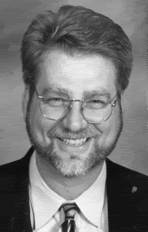
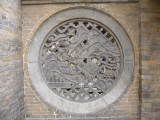
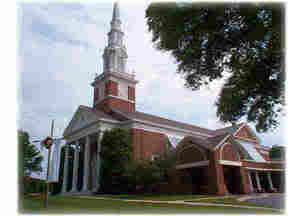
 Carter's Roost
Carter's Roost

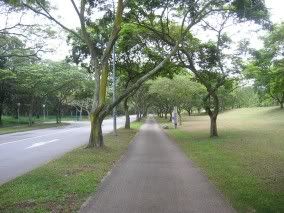
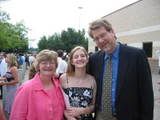

0 Comments:
Post a Comment
<< Home